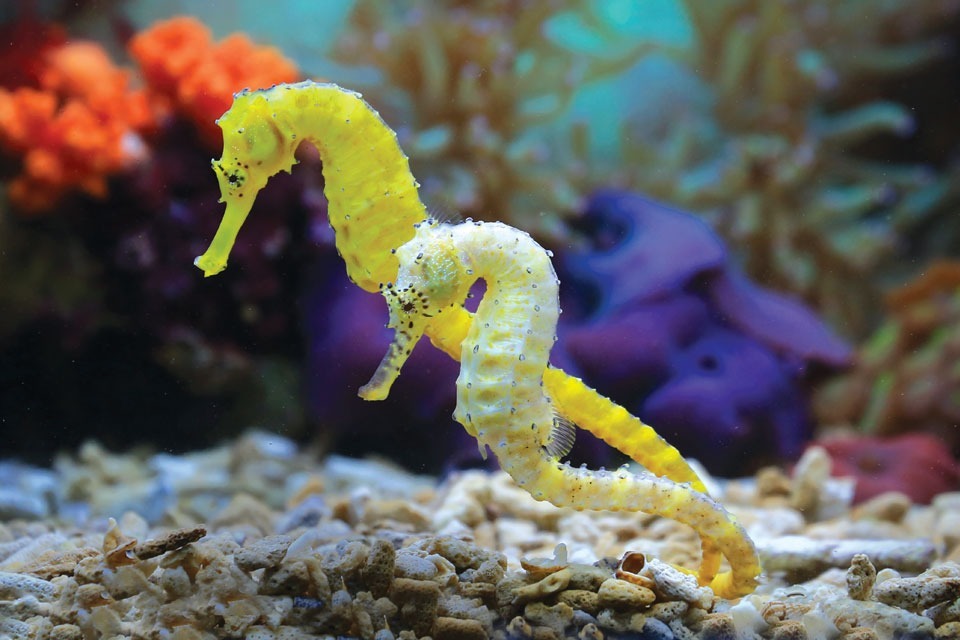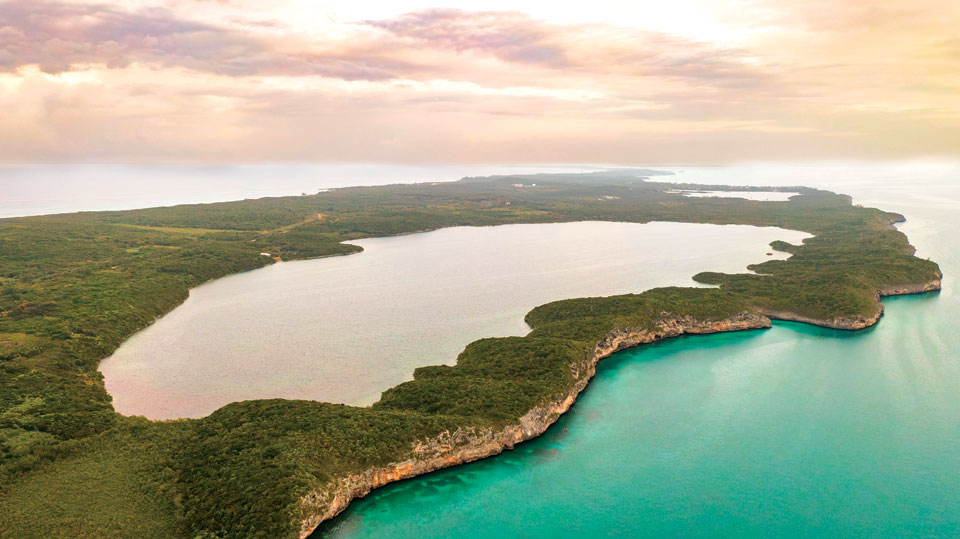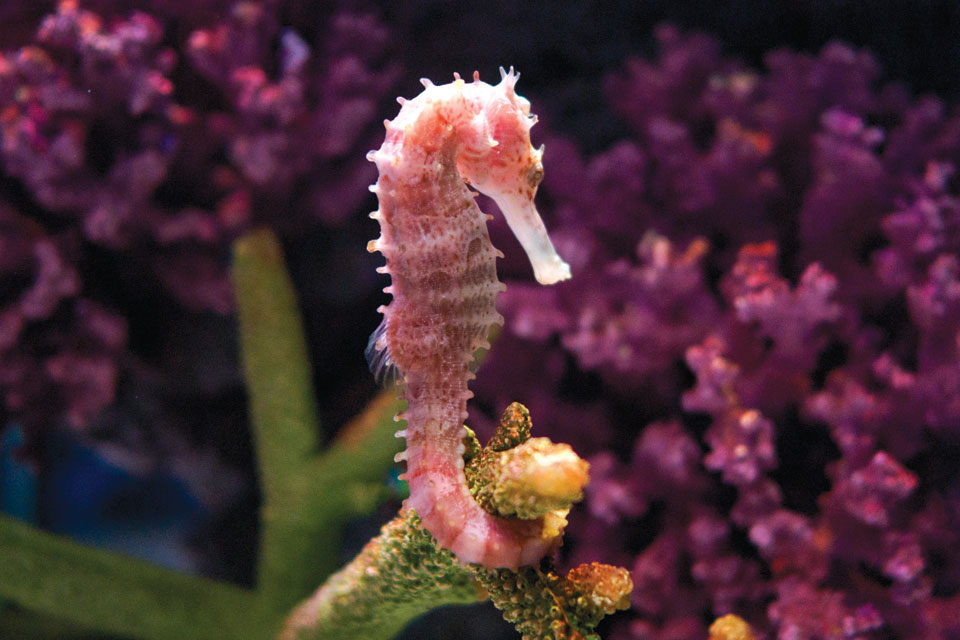
According to the International Union for Conservation of Nature (IUCN) Red List of Threatened Species, 12 of the 42 seahorse species that have been assessed so far are listed as Vulnerable, with two listed as Endangered, one as Near Threatened and 10
as Least Concern. The remaining 17 seahorse species are listed as Data Deficient. Four species are found in Pacific waters from North America to South America. In the Atlantic, Hippocampus erectus ranges from Nova Scotia to Uruguay. H. zosterae, known as the dwarf seahorse, is found in the Bahamas.
Seahorses are hunted by humans to be used for medicine, as sou-venirs, and in the pet trade. They are used for all types of medicine. Traditional Chinese Medicine Trade, The Curio Trade also takes enormous amounts of seahorses from the wild. They are often sold as souvenirs. The pet trade also takes an excessive number
of seahorses. Many of those taken in the pet trade will not survive more than six weeks.
Other major threats to seahorses include bycatch, habitat loss and climate change. Coral reefs and seagrass beds are deteriorating, reducing viable habitats for seahorses.
Numerous conservation groups, such as Project Seahorse and The Seahorse Trust, are working to protect seahorse species. Further research is needed to assess and protect these species.
Congratulations to the Bahamas for recognizing the importance of preserving this important species.
The Bahamas’ Newest National Park Is the Seahorse Capital of the World.
It’s a mile-long pond in Hatchet Bay on the island of Eleuthera. But this body of water is filled with wonders. Sweetings Pond, a land-locked saltwater pond, is home to what is said to be the densest population of seahorses anywhere in the world.

Sweetings Pond is a landlocked lagoon connected invisibly to the ocean. This unusual environment hosts distinctive populations of fabulous ocean creatures including the vulnerable seahorse.
The unique population has helped earn this global sea-horse capital a new title: the newest national park in The Bahamas is called, fittingly, Seahorse National Park.
The park encompasses 548 acres – protecting both the pond itself and the area beyond – including the Hatchet Bay Caves system, what The Bahamas National Trust calls “one of the longest dry cave systems in The Bahamas.”
The park designation “has been a long time coming,” said Bahamas Minister of Agriculture,Marine Resources and Family Island Affairs Clay Sweeting. “It represents a milestone in our journey towards sustainable development. It symbolizes our collective responsibility to safe-guard our natural heritage and create a harmonious relationship between economic progress and environmental preservation.”
The idea is to “transform Sweetings Pond into a world-class national park,” said Lakeshia Anderson Rolle, Executive Director of The Bahamas National Trust.
“The declaration of Seahorse National Park is more than just a design-ation; it is our shared promise to our community, to future generations, and to the world that we are committed to conserving our unique and diverse ecosystems for the benefit of all Bahamians,” she said.
The park is yet another reminder of Eleuthera’s vast, pristine natural environment, from pink sand beaches to imposing cliffs, to the world-famous Ocean Hole in Rock Sound.
The threatened seahorse, Hippocampus erectus, is found here in numbers never discovered elsewhere. Sweetings Pond provides a vital buffer against declines in other parts of its range.
Protecting Sweetings Pond is one important step towards saving seahorses and their marine communities.

